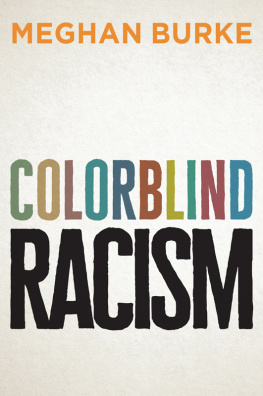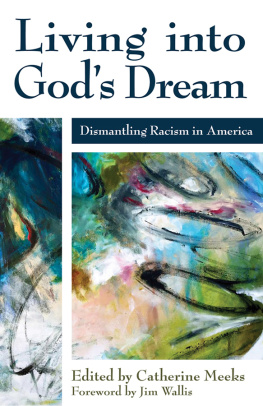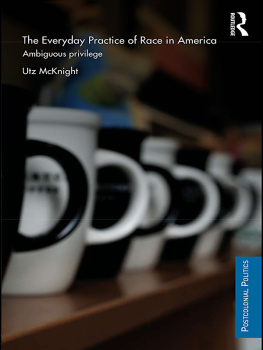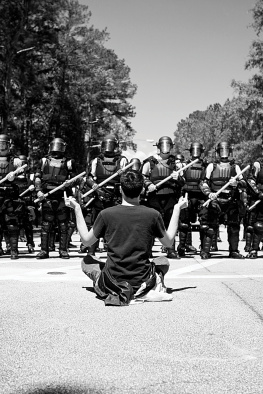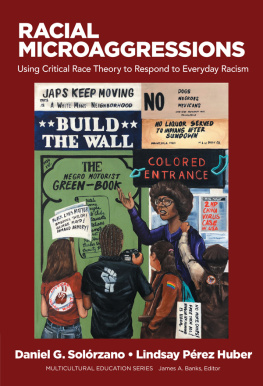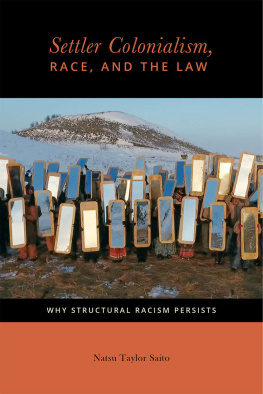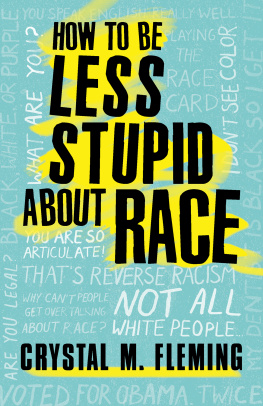
Dismantling the Racism Machine
While scholars have been developing valuable research on race and racism for decades, this work does not often reach the beginning college student or the general public, who rarely learn a basic history of race and racism. If we are to dismantle systemic racism and create a more just society, people need a place to begin. This accessible, introductory, and interdisciplinary guide can be one such place. Grounded in critical race theory, this book uses the metaphor of the Racism Machine to highlight that race is a social construct and that racism is a system of oppression based on invented racial categories. It debunks the false ideology that race is biological. As a manual, this book presents clear instructions for understanding the history of race, including whiteness, starting in colonial America, where the elite created a hierarchy of racial categories to maintain their power through a divide-and-conquer strategy. As a toolbox, this book provides a variety of specific action steps that readers can take once they have developed a foundational understanding of the history of white supremacy, a history that includes how the Racism Machine has been recalibrated to perpetuate racism in a supposedly post-racial era.
Karen Gaffney is a Professor of English at Raritan Valley Community College in New Jersey, where she teaches courses in composition, gender, and race. She focuses on antiracism activism in the community, on her blog (dividednolonger.com), and in workshops at the White Privilege Conference and Netroots Nation.
Dismantling the Racism Machine
A Manual and Toolbox
Karen Gaffney
First published 2018
by Routledge
711 Third Avenue, New York, NY 10017
and by Routledge
2 Park Square, Milton Park, Abingdon, Oxon OX14 4RN
Routledge is an imprint of the Taylor & Francis Group, an informa business
2018 Karen Gaffney
The right of Karen Gaffney to be identified as the author of this work has been asserted by her in accordance with sections 77 and 78 of the Copyright, Designs and Patents Act 1988.
All rights reserved. No part of this book may be reprinted or reproduced or utilised in any form or by any electronic, mechanical, or other means, now known or hereafter invented, including photocopying and recording, or in any information storage or retrieval system, without permission in writing from the publishers.
Trademark notice: Product or corporate names may be trademarks or registered trademarks, and are used only for identification and explanation without intent to infringe.
Library of Congress Cataloging-in-Publication Data
A catalog record for this book has been requested
ISBN: 978-1-138-03721-2 (hbk)
ISBN: 978-1-138-03722-9 (pbk)
ISBN: 978-1-315-17800-4 (ebk)
Typeset in Adobe Caslon Pro
by Apex CoVantage, LLC
Id like to begin by introducing myself so readers have some context for this book and to thank those who have helped me. First and foremost, I want to acknowledge that as a white woman, I am writing from a place of privilege. I am not writing about what it means to be a person of color because I will never have that experience. I am writing as a white person who has inherited a system of privilege that I seek to dismantle because it is unjust.
I have been an English professor at Raritan Valley Community College in New Jersey since 2003, which has allowed me to establish a foundation in teaching introductory-level courses because my students are all freshmen and sophomores. I have greatly valued the opportunity to serve the community by teaching at an open-access institution. More than ten years ago, I developed an English literature elective called Race in American Literature and Popular Culture, an introductory course on race and racism. While I had no trouble finding literature and scholarship to assign, the options for an introductory and interdisciplinary textbook were limited. I hope this text can contribute to that need by connecting research from many disciplines and translating that into accessible concepts, history, and action items for readers new to this work. Ive had my students in mind as Ive been working on this project, and Im especially thankful to former students Alicia Ventriglia and Rachel Dietz for providing feedback on this manuscript.
In the spring of 2017, I taught this course inside the only womens prison in New Jersey, the Edna Mahan Correctional Facility for Women, as part of my colleges program to offer our liberal arts degree in several prisons in New Jersey. Im grateful to the women inside for sharing their perspectives and insight with me. The urgency in this books action section () to end mass incarceration is not abstract or merely intellectual; the urgency is real for the women of Edna Mahan and for the more than two million people in our prisons, jails, and detention centers.
From October 2016 to April 2017, I facilitated a version of the course for the community that was free and open to the public. Hosted by the Unitarian Universalist Congregation of Somerset Hills (based in Somerville, NJ), I met with about twenty community members every month to discuss assigned readings that focused on the key concepts of this book: debunking the false ideology that race is biological, understanding that racism is systemic, and taking action to end systemic racism. Special thanks to Reverend Jennifer Kelleher and Social Action Committee Chair Michelle Edgar for supporting this course and for providing feedback on this manuscript. Facilitating this course outside of a traditional academic setting allowed me to engage this work in a different way, and I greatly appreciate the time and commitment of this group and how much they taught me. Many members also contributed feedback on this manuscript, and for that, I am especially grateful. Thank you especially to Jacque Drummer, Doug Anderson, Jeff Bradley, and Anne Ehrhart.
Working with the local social justice organization the Meta Theatre Company has taught me how theatre can be a path to justice in prison, at school, and in the community. I was particularly grateful to Meta to be able to participate in an ongoing discussion of the book titled The New Jim Crow at the Edna Mahan Correctional Facility for Women and in a corresponding weekly discussion in the community. Presenting at the White Privilege Conference with Meta members has been extremely valuable in helping me work on accountability and action. Im especially thankful to Caroline Hann, Barbara Cannell, and Cyndie Wiggins for your leadership and your dedication to the women of Edna Mahan.
Being an active part of the Hunterdon County Anti-Racism Coalition for more than two years has allowed me to participate in discussions, events, and actions aimed at raising awareness about racism in a predominantly white and wealthy area of rural New Jersey. Special thanks to Alexa Offenhauer, Nicole Maniez, and Laura Higgins for your leadership and to the group for your work. Thank you to Filomena Hengst for your community organizing and your feedback on this manuscript. Ive also been honored to participate in the planning process for the Stoutsburg Sourland African American Museum in Somerset County, New Jersey, which is teaching me a history of my local community. Also, helping create the new Central Jersey Community Coalition has been another opportunity for me to learn from and support local organizations, activists, and community members that work on a variety of social justice issues. Serving on the board of NORWESCAP (the Northwest New Jersey Community Action Partnership) has also taught me about supporting local communities. Several years ago, serving as a county meet-up leader for Democracy for America, running for local office, and working on local campaigns helped me understand the need for more people to get involved in politics at the local level, and I also learned how desperately we need to separate money from politics.


